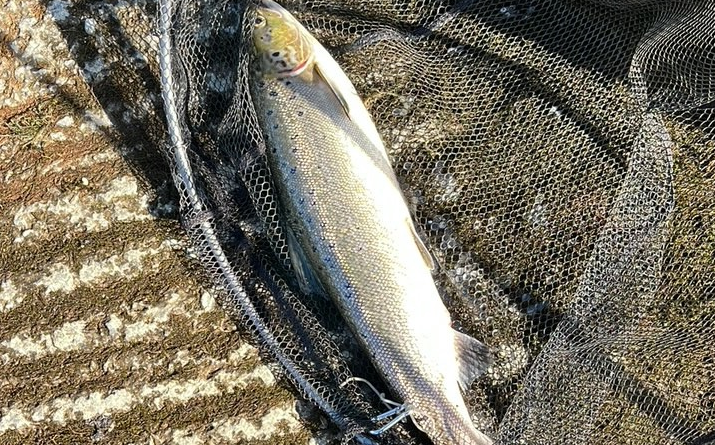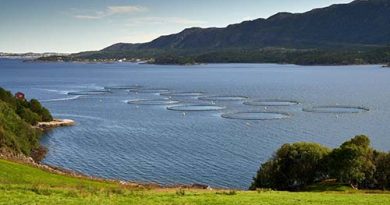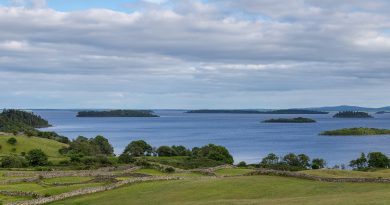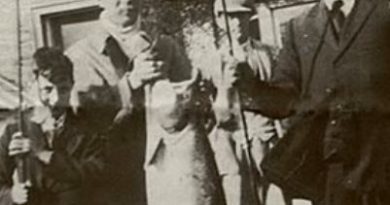We need your Help
To stop another salmon farm been given a licence to produce farmed salmon, We all need to start taking action NOW if we want to protect our wild Salmon and Sea Trout stocks,
The application is for Coulagh Bay, Co.Cork Ref TO5/233
To Help please copy the text below and send it to the following email address FinfishPC@agriculture.gov.ie
“Dear Minister,
I wish to object to the above licence application for the following reasons:
1 – Inishfarnard is immediately adjacent to Glanmore Bog SAC (code 001879) where the Qualifying Interest includes Freshwater Pearl Mussel (FPM) in the Owenagappul River. The National Parks and Wildlife Service (NPWS) has described the FPM stocks in the Owenagappul River as “of international importance and one of eight Irish populations prioritised for conservation action”. In 2014 NPWS found the stocks of FPM in the Owenagappul to be considerably reduced on the 2005 baseline study. The river failed the target measure of less than or equal to 65mm for both juvenile and young mussels; indeed no juvenile mussels were found (Ross 2017). FPM have been proven to be dependent in their reproductive cycle on wild anadromous salmonids carrying juvenile mussels (glochidia) for distribution around the river. The presence of a salmon farm in the immediate vicinity of the mouth of the Owenagappul river, which will undoubtedly have an adverse impact on the runs of wild salmon and sea trout, is therefore inconsistent with the needs of the SAC. The salmon farm must be removed if this international stock of Freshwater Pearl Mussels is to be protected.
2 – The Lough Fadda river system, a tributary of the Owenagappul and an Inland Fisheries Ireland (IFI) designated salmon river, is currently closed to angling as it has not met its Conservation Limit. Indeed, recent IFI electro fishing surveys in the system have indicated perilously low levels of anadromous salmonids. This is yet another indicator of the need to remove the salmon farm.
3 – Glenbeg Lough at the head of the Owenagappul River is the source of the public water supply for Castletownbere, Eyeries, and Ardgroom. To protect the threatened FPM in the Owenagappul, the NPWS has imposed a cap on the level of water abstraction from the lough. To support this move, Cork County Council has had to decline new planning applications for new houses or developments that would draw on Glenbeg Lough for water supply. The removal of the Inishfarnard salmon farm would help wild salmonids in the Owenagappul and, as a consequence, also assist the stocks of FPM.
4 – The salmon farms in Kenmare Bay, including Inishfarnard, have been having a negative impact on the wild salmonid rivers flowing into the bay through sea-lice infestation and spread of disease. This has adversely impacted wild salmon runs and has led to a general collapse in sea trout stocks. Kenmare Bay is a relatively shallow bay and the hydrology is such that the waters circulate through the bay. MOWI’s Natura Impact Statement, where it refers to currents and water movements, makes it clear their study is based on computer modelling and not a physical study of actual currents in Kenmare Bay. MOWI’s computer modelling results are at variance with the physical study of Kenmare Bay currents carried out by the Marine Institute. Sea-lice emanating from the Inishfarnard salmon farm are having an adverse impact throughout Kenmare Bay, including the River Blackwater which is in the Blackwater River (Kerry) SAC (code 0002173) where the Qualifying Interests include Atlantic Salmon and Freshwater Pearl Mussel. These sea-lice will also impact other IFI designated salmon rivers within Kenmare Bay, including the Croansaght, Clonee, Roughty, Sneem, Oweragh. Indeed the Currane, or Waterville system, which flows into Ballinskelligs Bay is well within 30km of the Inishfarnard salmon farm and forms part of the Killarney National Park, Macgillycudddy Reeks and Caragh River SAC (code 000365) where Atlantic salmon and Freshwater Pearl Mussel are a Qualifying Interest. It should also be noted that studies have shown that smolts migrating to salt water from freshwater will be significantly more impacted by sea lice infestation where that migration occurs within a 30km radius of a salmon farm (Study reference: The Relationship between Sea Lice Infestation, Sea Lice Production and Sea Trout Survival in Ireland 1992 – 2001).
5 – The Natura Impact Statement submitted is inadequate in that it relies on a narrow field of scientific data, such as Jackson et al, which suggests salmon farms have little impact on survival rates of wild salmon. There is a much broader and overwhelming field of Irish and International peer reviewed research which indicates the damage caused to wild salmonids by sea lice emanating from salmon farms is substantial and significantly damaging (including: Shepard and Gargan 2017, Shepard and Gargan 2020, Thorstad et al 2015). We need to lay aside Jackson et al and move to accept the best available scientific advice. MOWI cannot just continue to ignore the ongoing damage caused by sea-lice emanating from their farms on Natura 2000 sites. Minister, in assessing this application, you must please consider the ruling of The Court of Justice of the European Union (CJEU) in Case C-258/11, Sweetman & Others v An Bord Pleanala & Others and what it held in regard Natura 2000 sites when the court ruled: “authorisation for a plan or project…may therefore be given only on condition that the competent authorities …are certain that the plan or project will not have lasting or adverse effects on the integrity of the site. This is so where no reasonable scientific doubt remains as to the absence of such effects”. On this basis the application must be rejected.
6 – There has been no whole-bay fallowing in Kenmare Bay as production in MOWI’s farms at Deenish and Inishfarnard has been in alternate years. This has led to an ongoing source of sea-lice larval production, and spread, through 12 months of the year.
7 – Salmon farm escapees have been proven to interbreed with wild salmon, thus compromising the genetic integrity of the wild native stocks and leading to reduced survival rates in the offspring.
8 – The Inishfarnard salmon farm has had ongoing problems with Amoebic Gill Disease, which can be passed to wild salmonids.
9 – Our seas are warming as a result of climate change and mortalities in salmon farms have been on the increase. Mortalities on Irish salmon farms, now running at an average of 25% are unacceptable from an animal welfare standpoint. There is no reason to anticipate water temperatures will fall in the near term to resolve this issue.
10 – MOWI’s poor record of adhering to licence conditions at its Deenish Island farm demonstrates a disregard for Ireland, our environment and our laws. MOWI cannot be trusted.
The history of salmon farms in Ireland and overseas is one of sea lice infestation and disease, leading to the devastation of wild salmonids, damage to our Freshwater Pearl Mussel stocks and the loss of valuable tourist angling business, associated employment and economic benefits. Minister, please decline this licence application – it is long past time the salmon farm industry stopped poisoning the environment and moved to a closed containment, fully recirculating on-land system of salmon production.
Signed
___________________________________________”




